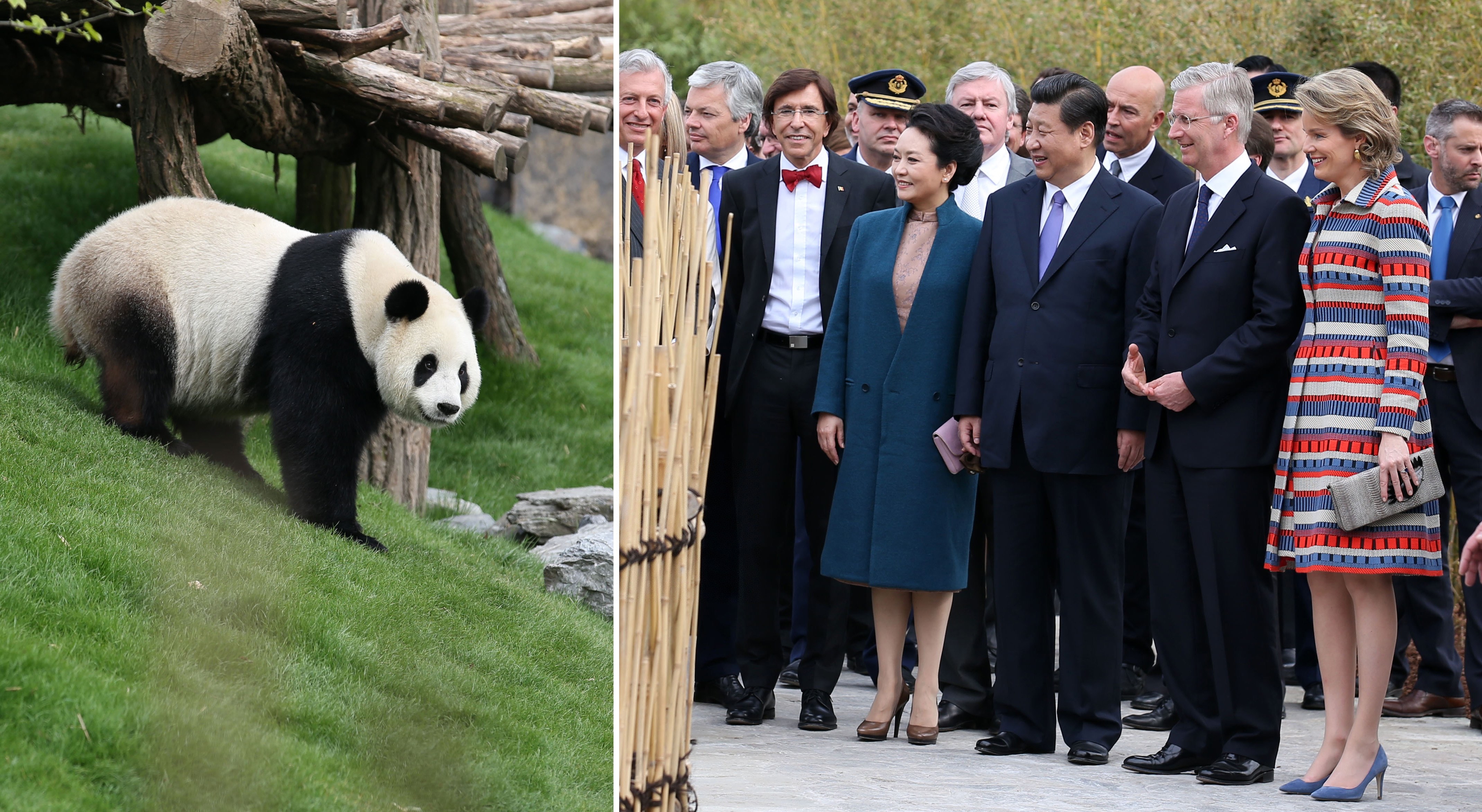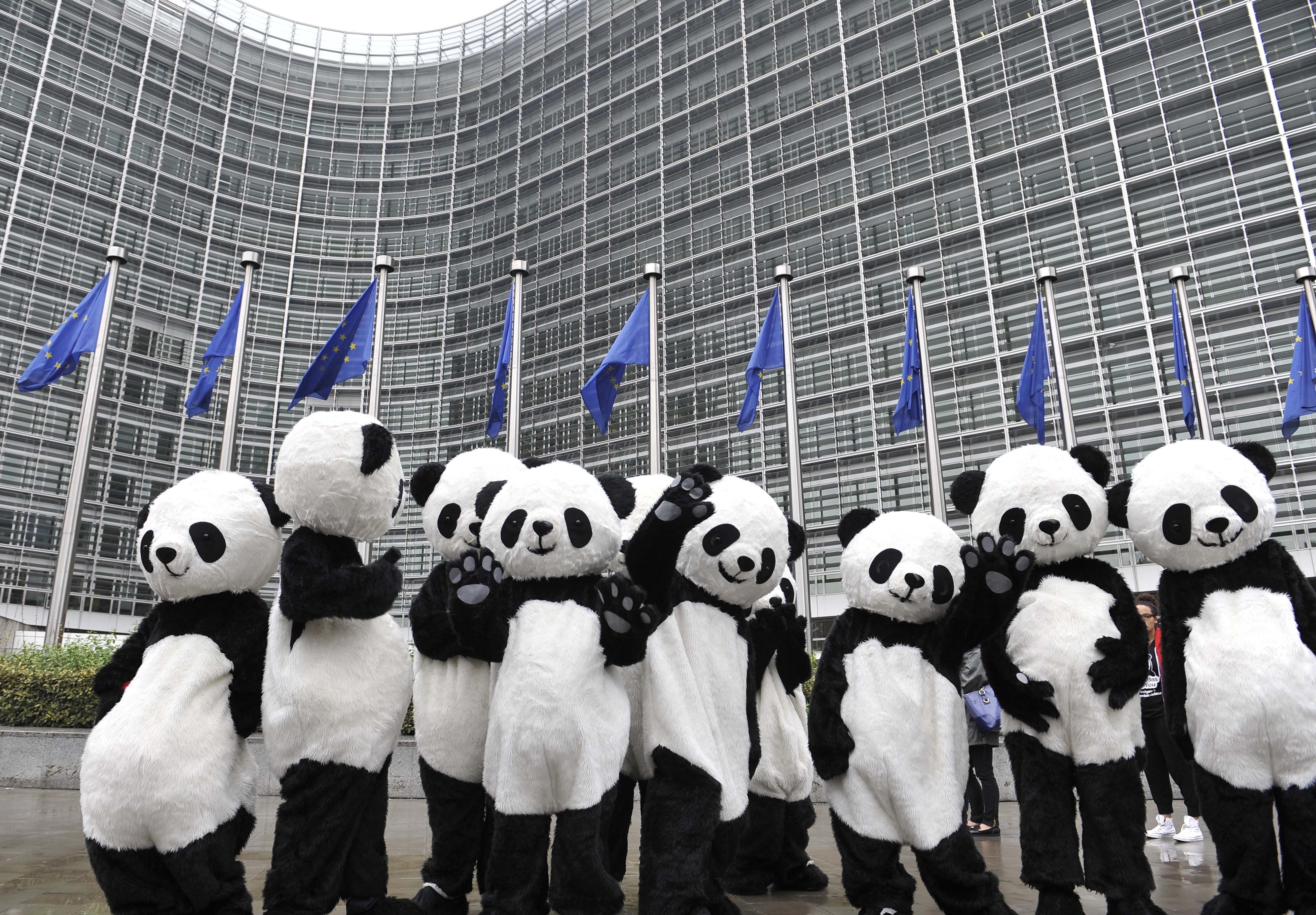Panda Diplomacy
Away from the intense negotiations at the recent G20 summit in the Australian city of Brisbane, a handful of leaders’ spouses were taken on a trip to a wildlife sanctuary. On the two-hour visit around the sanctuary, the spouse of the Chinese president, Peng Liyuan (彭丽媛), was pictured holding an animal synonymous with Australia: the koala bear. The world’s media spoke of ’koala diplomacy”, the use of this cuddly marsupial to strike up a friendship with others. But it is not just Australia that practices diplomacy using cuddly animals native to their country. China has long been engaged in this fine diplomatic art with carnivores native to south central China: the giant panda.

-Chinese President Xi Jinping and wife Peng Liyuan with Belgium’s King Philippe and Queen Mathilde at Pairi Daiza zoo in Brugelette (Copyright: Xinhua)
Panda diplomacy, as it is known in diplomatic circles, is China’s way of striking that friendship chord with other nation states. The gift of a panda has gained diplomatic credence since the formation of the People’s Republic of China, but where did this tradition come from? How has panda diplomacy evolved over time? And where does panda diplomacy go next? Such questions have interested me, as a wannabe diplomat, ever since the giant pandas Tian Tian (甜甜) and Yang Guang (阳光) arrived in my native Britain in 2011 to rolling live TV coverage and widespread public attention.
You have to go back over 1300 years, though, to what is thought to be the first recorded instance in Chinese history of panda diplomacy. Two bears and seventy pieces of fur were sent by the Empress Wu Zetian (武则天) of the Tang Dynasty (唐朝 618-907) to the 40th Japanese emperor in 685 AD. It is generally agreed today that these two bears in question were, indeed, pandas; and with it, the first known instance in Chinese political history of these creatures being used as a diplomatic gift. In more recent times, Japan—not necessarily known for its strong ties with China—received two pandas from China in 2008. On a state visit to Japan three months before the start of the Beijing Olympic Games, the former Chinese president, Hu Jintao (胡锦涛), was quoted as saying: “Giant pandas are very popular among the Japanese, and they are a symbol of the friendly ties between Japan and China.”
But is there perhaps a bit more to modern-day panda diplomacy than just popularity and symbolism? The author of The Way of the Panda: The Curious History of China’s Political Animal (Profile Books, 2010), Henry Nicholls, seems to think so: “China’s expansion across the globe—and its use of pandas—has become more obvious and the motivation for the loans has become muddied,” he said. “They are no longer just about conservation, but become increasingly bound up with political and economic ambitions.” It would appear more than a coincidence that shortly after Tian Tian and Yang Guang arrived at Edinburgh Zoo in 2011 numerous billion-dollar trade deals were signed by China and Scottish firms, including for Land Rover vehicles, Scottish fish and green technology. A year later, in 2012, two giant pandas were on their way to Canada after multibillion-dollar deals to export uranium to China were secured. And most recently in spring of this year, the new Chinese president, Xi Jinping (习近平), and his wife visited Belgium to inspect the giant pandas Xing Hui (星徽) and Hao Hao (好好) during an EU-wide tour focusing on trade deals in France and Germany.

-Volunteers to recruit Chengdu Giant Panda Guardian Ambassadors, Berlaymont building, Headquarters of the European Commission, Brussels (Copyright: Xinhua)
Very much linked with improved trade relations, post-2008 panda diplomacy has been deemed by some political and diplomatic commentators as a type of ‘guanxi’ (关系), a term that individuals doing business in China are most likely to encounter. It refers to a personalised network of influence, loyalty and commonality. Interestingly enough, since 2008, pandas have been received by some of China’s main trading partners, predominantly members of the G8 – now G7 – leading industrialised nations. Pandas are, therefore, bestowed on countries based on mutual need, providing China with much-needed technology and resources to fuel its expanding economy.
The first two countries to be presented with a pair of pandas were Russia in 1957 and North Korea in 1965. Although economic and trade considerations may have played a role in motivating Chairman Mao (毛泽东) to send these ‘goodwill ambassadors’ to these respective countries, it is more likely to have been an expression of political solidarity, not least because Russia and North Korea shared many of China’s own communist principles at the time and also belonged to the same sphere of influence.
It was not until the early seventies, however, when pairs of pandas were sent to the West, doing much to bridge the East-West divide at the time. In 1972, US president Richard Nixon became the first president to visit the People’s Republic of China. Soon after that visit, Ling Ling (玲玲) and Xing Xing (兴兴) arrived in Washington D.C. with more than three million visitors coming to view the pandas in the Smithsonian’s National Zoo every year thereafter. Within a two-year period, Japan, France, Germany and Great Britain all received pairs of pandas, proving to be an instant hit among the zoo-going public in those respective countries. For the Chinese, they had hit upon a means of extending the hand of friendship at the height of the Cold War through an animal native to its wild, with endearing looks and behaviour. For the recipient nations and the zoos in which the pandas were housed, it meant bringing a symbol of the Chinese nation to the West, widening understanding and awareness of China and its animal culture.
China is known for its ancient traditions and customs and even something such as the exchange of pandas as a diplomatic gift goes back more than 1300 years. But it was soon after the founding of the People’s Republic of China that pandas were deployed on the global stage for China’s own diplomatic ends. From a political and diplomatic gift in the mid-twentieth century to a type of symbolic trade gift at the start of the twenty-first, the differing use of the panda as a diplomatic tool is a true reflection of China’s shifting international priorities over the past 60 years. Given China’s current proactive approach of establishing new trade ties, it goes without saying that Xi Jinping and Peng Liyuan will be visiting many pandas gifted to strategically important foreign trade partners in the months and years to come.
 Share on Facebook
Share on Facebook Share on Twitter
Share on Twitter Share on LinkedIn
Share on LinkedIn